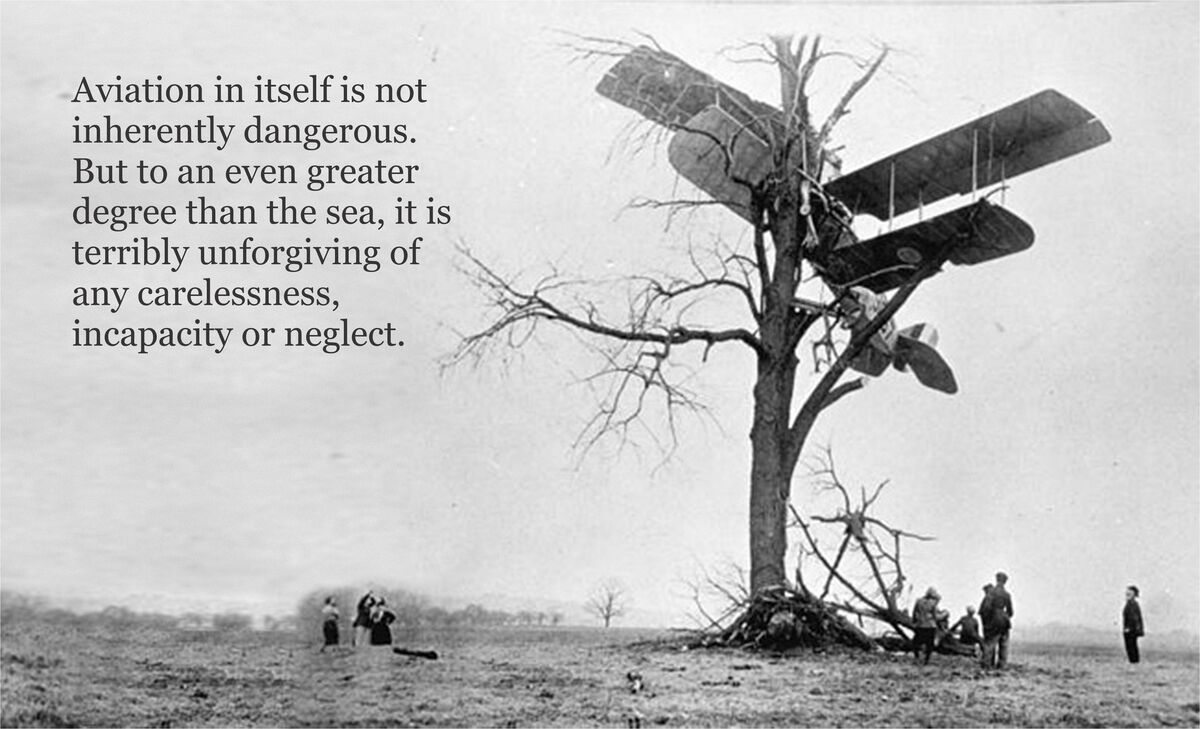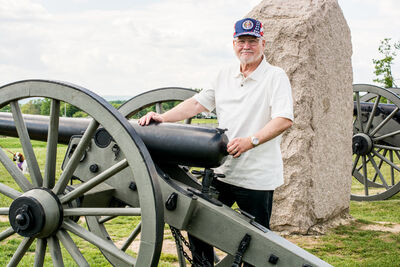Three Plane Crashes
Mar 5, 2024 09:22:59 #
A few days ago, there was a brief discussion about retreaded tires. An airline crashed and burned after takeoff several years ago because the retreaded tire on the nose gear lost its tread. It was the third time the tire had been retreaded, and it wasn't done correctly. I'm surprised that they would allow an airliner tire to be retreaded, especially three times.
Coincidentally, two planes crash during stall testing after maintenance was done. One was a large cargo plane, and the other was a smaller jet. In both cases, the pilots mishandled the planes during the stall. Both were destroyed, with no survivors. The pilots were reported to be excellent, with experience in managing stalls. The smaller plane had a swept wing design, and that is difficult to recover from a still. (blancolirio on YouTube)
When I was in college, four of us rented a plane, and a student down the hall from me was the pilot. When we got over the Hudson River, he demonstrated a stall and recovery. I don't think I'd want to do that today.
Coincidentally, two planes crash during stall testing after maintenance was done. One was a large cargo plane, and the other was a smaller jet. In both cases, the pilots mishandled the planes during the stall. Both were destroyed, with no survivors. The pilots were reported to be excellent, with experience in managing stalls. The smaller plane had a swept wing design, and that is difficult to recover from a still. (blancolirio on YouTube)
When I was in college, four of us rented a plane, and a student down the hall from me was the pilot. When we got over the Hudson River, he demonstrated a stall and recovery. I don't think I'd want to do that today.
Mar 5, 2024 10:33:44 #
Our P3 Orion (a 4 engine, turbo-prop, multi-crew aircraft) squadron lost a plane doing stall recovery training at low altitude. This resulted in the Navy re-writing the operational training manual mandating that all stall training be conducted at or above 10,000 feet. The accident happened March 15, 1973.
When I was in flight training in a small Cessna, our stall training was conducted at or above 5,000 feet and the rules were that we were only allowed to enter a stall, not allow the bird to go into a full stall where the nose or wings dropped. We had to recover as soon as the stall warning horn started to sound. My instructor on the other hand was old school and took me up to 8000 feet and let it go into a full stall and spin to see what it felt like.
REMEMBER
When I was in flight training in a small Cessna, our stall training was conducted at or above 5,000 feet and the rules were that we were only allowed to enter a stall, not allow the bird to go into a full stall where the nose or wings dropped. We had to recover as soon as the stall warning horn started to sound. My instructor on the other hand was old school and took me up to 8000 feet and let it go into a full stall and spin to see what it felt like.
REMEMBER

Mar 5, 2024 11:14:46 #
Shellback wrote:
Our P3 Orion (a 4 engine, turbo-prop, multi-crew a... (show quote)
In the case of the private jet, the plane was way too high and flying in clouds. Both of those things were a direct violation of stall recovery directions for that particular plane - clear skies, no higher that 10,000 (maybe 14,000) feet.
Mar 5, 2024 12:45:18 #
jerryc41 wrote:
In the case of the private jet, the plane was way too high and flying in clouds. Both of those things were a direct violation of stall recovery directions for that particular plane - clear skies, no higher that 10,000 (maybe 14,000) feet.
Unfortunately too many aircraft accidents are pilot error.
Mar 5, 2024 13:24:53 #
jerryc41 wrote:
A few days ago, there was a brief discussion about... (show quote)
I am a pilot. "Stall testing" is not part of a test flight after maintenance. Stalls are maneuvers normally only performed when training (or periodically evaluating) pilots in their ability to recover from unusual attitudes that might be encountered when flying in adverse weather. So, either the pilots were horsing around when they shouldn't be or the reporter just didn't get the facts straight.
Mar 5, 2024 13:51:34 #
Shellback wrote:
Our P3 Orion (a 4 engine, turbo-prop, multi-crew a... (show quote)
Your image is SOOO true concerning the sea.
Mar 5, 2024 14:11:04 #
chrissybabe
Loc: New Zealand
ecblackiii wrote:
................So, either the pilots were horsing around when they shouldn't be or the reporter just didn't get the facts straight.
Regardless of who did what in the actual plane the last part about reporters not getting the facts straight is probably more correct than anything. Why a reporter, who most likely did 'soft' subjects at school, thinks that they can apply their 'knowledge' to any technical subject especially when their 'facts' came from some sort of media person (same background) and expect us to believe anything they write is beyond me.
Mar 5, 2024 15:18:43 #
ecblackiii wrote:
I am a pilot. "Stall testing" is not part of a test flight after maintenance. Stalls are maneuvers normally only performed when training (or periodically evaluating) pilots in their ability to recover from unusual attitudes that might be encountered when flying in adverse weather. So, either the pilots were horsing around when they shouldn't be or the reporter just didn't get the facts straight.
They were both commercial planes - owned by companies, and those companies required a stall test after maintenance. The cargo plane, M-D, I think, went through a major overhaul and got new engines. That must have cost a fortune. They had a long list of things to check, and the stall was the last one they began. Here's a link. https://www.youtube.com/watch?v=csnimAmOjEU
The smaller plane was a Hawker, and the manufacturer required the stall test after certain procedures were carried out. https://www.youtube.com/watch?v=o6pBdUw4XPM
Mar 5, 2024 15:20:46 #
ecblackiii wrote:
...or the reporter just didn't get the facts straight.
In the case of the M-D cargo plane, the "reporter" was the NTSB. https://www.youtube.com/watch?v=csnimAmOjEU
Mar 6, 2024 07:39:01 #
In the Hawker jet the test flight was made to test the stall detection system which would require the crew to at least approach stall conditions or to enter a stall momentarily to ensure the detection/warning system was working normally. Stalls are normally a benign maneuver in most planes when performed properly but can be challenging in swept-wing jets, especially if performed incorrectly. However, even in simple trainers, a stall can develop into a spin if performed outside of normal parameters.
However, it appears the crew performed the stall at too high an altitude and possibly allowed the jet to enter the stall with the wings not level. The thinner air at this altitude probably delayed the stall recovery and possibly allowed a wing to drop which quickly developed into an unrecoverable spin.
As a flight instructor, I have done and taught stalls many times. As I noted above, they are usually benign and gentle maneuvers that are accomplished quickly. However, done improperly they can develop into a spin making it more exciting. But even then, at the proper altitude, spins are easily recoverable in training-type aircraft. I have done 10-12 turn spins in training aircraft starting at 5000-6000 feet giving plenty of time for recovery. Jets often do not have this ability as their spin and descent rates can be much higher.
However, it appears the crew performed the stall at too high an altitude and possibly allowed the jet to enter the stall with the wings not level. The thinner air at this altitude probably delayed the stall recovery and possibly allowed a wing to drop which quickly developed into an unrecoverable spin.
As a flight instructor, I have done and taught stalls many times. As I noted above, they are usually benign and gentle maneuvers that are accomplished quickly. However, done improperly they can develop into a spin making it more exciting. But even then, at the proper altitude, spins are easily recoverable in training-type aircraft. I have done 10-12 turn spins in training aircraft starting at 5000-6000 feet giving plenty of time for recovery. Jets often do not have this ability as their spin and descent rates can be much higher.
Mar 6, 2024 08:24:25 #
Long time ago , when planes stalled , they usually crashed , the fix was when that happen , dont fight it , just let go the stick , the plane would eventually straighten itself ????? .
Mar 6, 2024 08:48:54 #
agillot wrote:
Long time ago , when planes stalled , they usually crashed , the fix was when that happen , dont fight it , just let go the stick , the plane would eventually straighten itself ????? .
The system pushes the stick down to gain speed.
Mar 6, 2024 09:02:01 #
chrissybabe wrote:
Regardless of who did what in the actual plane the last part about reporters not getting the facts straight is probably more correct than anything. Why a reporter, who most likely did 'soft' subjects at school, thinks that they can apply their 'knowledge' to any technical subject especially when their 'facts' came from some sort of media person (same background) and expect us to believe anything they write is beyond me.
I’ve done a bit of aviation accident investigation in my past, and get a serious chuckle when I read the local paper reports of what happened.
Years ago, one of our investigators was playing volleyball on the beach one summer evening when one of our aircraft made an emergency landing nearby. We’d often joke that the man in the street answer was ‘it was like boom boom, then a fire, then it crashed’…because that’s how airplanes crash. We agreed that he missed the opportunity to say ‘I thought it was an atom bomb’.
Another time, we were at a farewell party for one of our coworkers and his phone rings. It was his mother telling him to check the news because there was a crash and it was televised. We walked into the bar to see the news on CNN. So the short answer to ‘how do investigators find out about a crash?’, is that their mother calls them.
Mar 6, 2024 10:16:36 #
olddutch
Loc: Beloit, Wisconsin
I was reading an article a short time ago. What about modern stream airplanes getting into stalls either intentionally or accidentally and it made comment do to them being so streamlined that when you get into a stall you get into a test pilot category and early in May Flight, training we will do stalls Later on, we just did approach to stall so What they teach you today I don’t know
Mar 6, 2024 12:13:04 #
olddutch wrote:
I was reading an article a short time ago. What about modern stream airplanes getting into stalls either intentionally or accidentally and it made comment do to them being so streamlined that when you get into a stall you get into a test pilot category and early in May Flight, training we will do stalls Later on, we just did approach to stall so What they teach you today I don’t know
I'm glad that training doesn't require learning how to survive a crash.

If you want to reply, then register here. Registration is free and your account is created instantly, so you can post right away.


